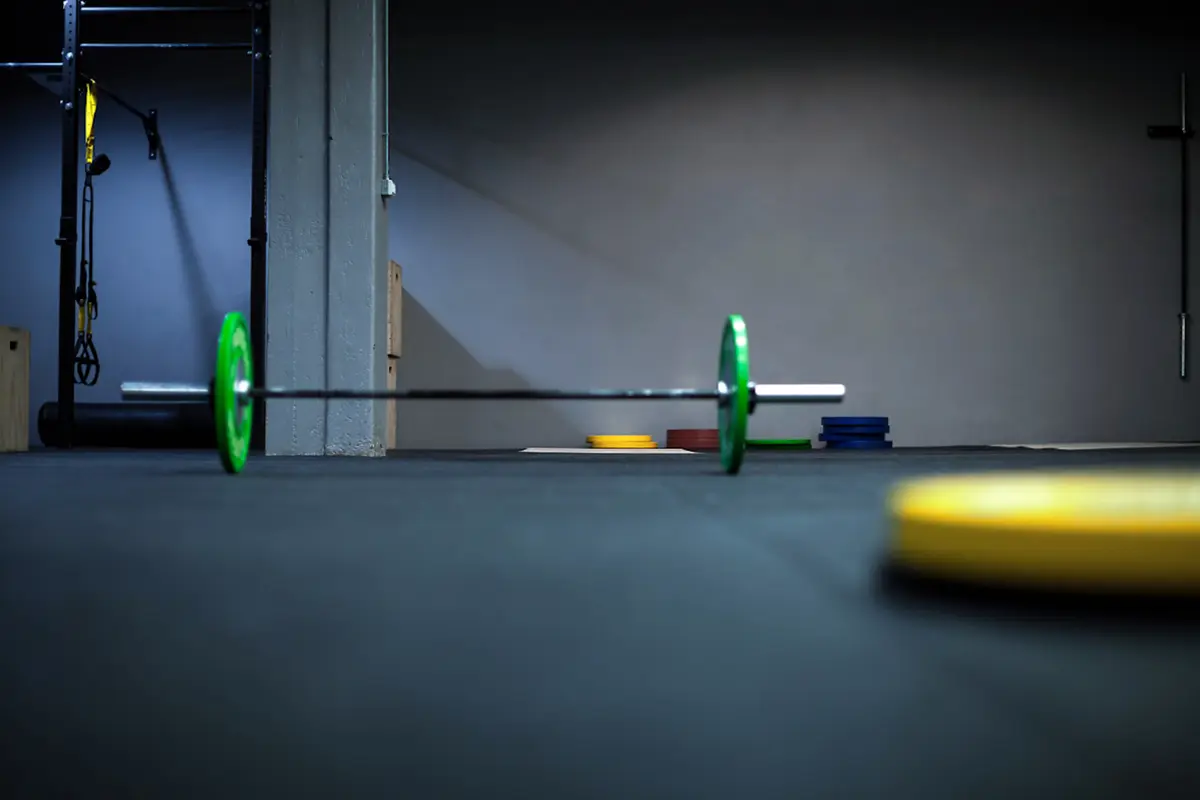Optimize Performance: Deload Weeks for Powerlifting

What's In This Article
- Key Highlights
- Introduction
- Deload Weeks for Powerlifting
- The Importance of Incorporating Deload Weeks
- How Often Should I Deload?
- Identifying the Need for a Deload Week
- Different Types of Deload Strategies
- Deload Week Programming Examples
- Nutrition Considerations During Deload Weeks
- Conclusion
- Frequently Asked Questions
- References
- Resources
Key Highlights
- Deload weeks are essential in powerlifting to prevent overtraining and optimize recovery.
- During these weeks, lifters reduce the intensity and volume of their training to allow the body to recover and adapt.
- They should be strategically planned based on individual training cycles and goals.
- Proper nutrition, hydration, and sleep are key to a successful rest week.
- Incorporating mobility work and light physical activity can still be beneficial during deload weeks.
- Listen to your body during these periods and adjust training to ensure long-term progress and injury prevention.
Introduction
After years of coaching powerlifters, I've seen the real impact of deload weeks on training progress. Too many lifters skip these crucial recovery periods, essential for long-term success. These weeks help prevent overtraining and injuries by strategically reducing volume and intensity while setting you up for consistent improvements.
It's a perfect time to work on technique without the stress of heavy weights. Proper deloads will help to keep you progressing and injury-free, whether competing or training for strength.
Deload Weeks for Powerlifting
Deload weeks in powerlifting are planned periods dedicated to recovery and adaptation. Powerlifting puts the body under a lot of stress, and these weeks aim to mitigate fatigue, prevent overtraining, and reduce the risk of injuries.
Mike Tuchscherer, a renowned powerlifting coach, initially believed deloads were unnecessary. However, he later adjusted his stance after experiencing overtraining himself. He now incorporates moderate-stress deloads into his athletes' programs.
- Lowering training volume and intensity allows the body to recover while maintaining muscle mass and strength. Understanding the science behind deloading is important for long-term performance and muscle recovery.
- It involves balancing the stress on the body to optimize adaptation, known as progressive overload, without reaching an injury or overtraining-induced plateau.
The Science Behind Deloading
- Deloading allows the body's central nervous system and muscles to recover from the accumulated stress of prolonged high-volume training sessions (Bell et al., 2023).
- By incorporating deload weeks into a training program, lifters can manage fatigue, minimize the risk of injury, and optimize performance in the long run.
- Understanding the physiological impact of deloading is crucial for athletes looking to balance training stimulus with adequate recovery.
The Role of Recovery in Muscle Building
- Muscle building relies heavily on adequate recovery. Deload weeks allow muscles to repair and grow.
- Proper rest reduces the risk of injury and supports muscle hypertrophy. Recovery from intense sessions is vital for optimizing performance and long-term gains in strength. (Sousa et al., 2024).
- Without sufficient rest, the body cannot adapt to the high demands of training, hindering progress in muscle development. Prioritizing recovery, including scheduling regular breaks, ensures the body can effectively repair and rebuild muscle tissue for continued progress (Dupuy et al., 2018).

The Importance of Incorporating Deload Weeks
Lifters must recognize that these weeks are not a sign of weakness but a wise practice that allows the body to recover, adapt, and grow stronger. By integrating deload weeks into your program, you prioritize your overall well-being and maximize the effectiveness of your training.
Brian Carroll, an accomplished powerlifter and back pain specialist who has squatted over 1000 pounds in competition, strongly advocates for deloads. He emphasizes their practical benefits and uses deloads in his training and with clients to prevent burnout and facilitate recovery.
Preventing Overtraining and Injuries
- Incorporating deload weeks is crucial to avoid overtraining and injuries in powerlifting.
- Overtraining can lead to decreased performance, fatigue, and a higher risk of injuries. (Aiucale et al., 2018).
- Deload weeks reduce the accumulated stress on muscles and joints, allowing for recovery and injury prevention.
- Listening to your body's signals and implementing these weeks into your training program is essential.
Enhancing Long-Term Performance Gains
- Integrating deload weeks can help to enhance long-term performance gains in powerlifting (Bell et al., 2022).
- Incorporating these periods of reduced volume and intensity can effectively manage fatigue and prevent overtraining.
- This approach promotes muscle recovery, reduces the risk of injury, and optimizes training adaptations.
- Consistent implementation of these in a structured training program boosts physical performance and endurance and fosters mental resilience, ensuring sustained progress and success in the sport over time.

How Often Should I Deload?
- Typically, scheduling a deload after four to six weeks of hard training can prevent overtraining and enhance recovery (Bell et al., 2023).
- There is variability between athletes. Monitoring signs of overtraining and considering individual factors like volume, intensity, and recovery capacity are key (Rogerson et al., 2024).
- Incorporating these periods before reaching a plateau can help you maintain progress without sacrificing performance.
- Understanding your body's response to training stimuli is essential in determining the most effective timing for these weeks.
Adjusting Intensity and Volume During Deload
- During a deload week, you decrease your workout intensity and volume. This reduction allows your body to recover without losing progress.
- Lowering the weights and the number of sets can help prevent overtraining and reduce the risk of injury.
- By adjusting these factors, you give your muscles the chance to repair and grow stronger.

Identifying the Need for a Deload Week
Recognizing the necessity of a deload week is paramount in sustaining prolonged progress.
Signs of Overtraining to Watch For
- Decreased performance during training sessions
- Persistent fatigue despite adequate res
- Increased muscle aches or joint pain
- Elevated resting heart rate (HRV)
- Worsened mental health like irritability or mood swings
- Disturbed sleep patterns
- Frequent illnesses or infections
Attention to your body's signals is essential to preventing serious injuries and setbacks in your training. Ignoring these warning signs can decrease performance, plateau strength gains, and prolong recovery times.
Listening to Your Body: The Ultimate Indicator
Recognizing your body's signals is crucial for successfully navigating deload weeks. Your body communicates through various cues, such as:
- Fatigue
- Lack of motivation
- Persistent soreness
- Decreased performance.
Pay attention to these signs to determine when a reduction is necessary. Ignoring these indicators may lead to overtraining and setbacks in your progress.

Different Types of Deload Strategies
Powerlifters have two main options when implementing strategies: active recovery and complete rest. The appropriate strategy depends on individual recovery needs, training age, and overall goals. Both approaches can facilitate recovery and prepare the body for subsequent training sessions.
Active Recovery vs. Complete Rest
Active recovery and complete rest are contrasting strategies during deload weeks in powerlifting.
- Active recovery involves low-intensity activities like light cardio, yoga or mobility exercises to promote blood flow and aid recovery without taxing the body.
- Complete rest means abstaining from exercise to allow for maximum recovery.
The choice between the two depends on individual preferences and needs, with both approaches offering benefits in reducing fatigue and preparing the body for upcoming training sessions.
Modifying Training Variables for Deloading
One central aspect of deload weeks is modifying training variables to optimize recovery. Juan Sanchez, head coach at SoCal Powerlifting, prefers a deload strategy that reduces volume by about 50% throughout the week while only dropping intensity by 5-10%.
- During deloading, reduce the workload by decreasing the number of sets and reps.
- Adjust training intensity using lighter weights and focusing on technique rather than pushing for maximal lifts.
Lowering the amount of weight and volume, such as swapping out heavy training for lower-intensity bodyweight exercises, will help ease the strain on your nervous system and muscles. This adjustment allows for better recovery while maintaining muscle function and readiness for returning to regular training sessions.
Deload Week Programming Examples
When designing a light week, it is important to maintain a balance between rest and activity.
- Reducing training volume by 40-60% while preserving intensity can be effective for a beginner powerlifter.
- An advanced lifter may benefit from a more drastic volume reduction of 60-80% with a focus on technique work and active recovery exercises.
Timing these weeks strategically after 4-6 weeks of training to high intensity can help prevent overtraining and improve long-term performance outcomes. Adjusting the deload based on individual needs is key to its success.
Beginner Powerlifter's Deload Plan
- A beginner powerlifter could decrease the volume while maintaining intensity.
- For example, reducing the number of sets and reps by 40-60% can help manage fatigue and prevent overtraining.
- Focusing on form and technique can aid skills acquisition and progress.
Advanced Powerlifter's Strategy
- When tackling a competitive athlete's strategy, it's crucial to fine-tune the approach for optimal recovery without compromising strength.
- One effective method involves reducing training volume and intensity by up to 50%.
- This decrease in load helps manage accumulated fatigue from the previous weeks and gives the body the necessary rest to bounce back stronger.
- Strategic breaks, such as taking a deload week a little before a competition, can prevent overtraining, boost athletic performance, and ensure good performance.

Nutrition Considerations During Deload Weeks
Maintaining proper nutrient intake is crucial to recovery during these periods. Adequate nutrition during this time is key to supporting the body's repair processes and preparing it for upcoming intense new blocks.
Maintaining Nutrient Intake for Recovery
- Protein aids in muscle repair
- Carbohydrates replenish glycogen stores, supporting energy levels.
- Nutrient-dense foods rich in vitamins and minerals can enhance the body's recovery process.
Paying attention to your diet during a deload week can expedite recovery, allowing you to return stronger for your next training cycle.
Hydration and Its Impact on Recovery
- Adequate hydration supports muscle function, joint lubrication, and nutrient transport, essential for post-training repair and growth.
- Dehydration can hinder muscle recovery and increase the risk of injury during intense training sessions.
- Optimal hydration levels facilitate the removal of metabolic waste products, speeding up recovery and reducing muscle soreness.
Conclusion
A regular deload week is a critical component of a powerlifting training program. The purpose of a deload week is to prevent overtraining, reduce the risk of injuries, and optimize long-term progression.
Listening to your body and recognizing overtraining signs are essential for sustainable progress in strength training. A week of recovery as part of a structured plan provides the necessary recovery for muscles, the central nervous system, and overall physical preparedness.
Frequently Asked Questions
How Often Should I Plan a Deload Week?
They should typically be planned every 4-8 weeks, depending on individual training intensity and recovery capacity. Monitoring performance, fatigue levels, and overall progress can help determine the optimal frequency for incorporating deload weeks into your training routine.
Can Deload Weeks Affect My Strength Gains?
They can positively impact strength gains by allowing muscles to recover, preventing overtraining. Strategic deloading helps maintain long-term performance and reduces the risk of injuries, enhancing muscle-building potential. Timing and adjusting intensity are key for optimal results during deload weeks.
Should Deload Weeks Include Cardio?
Should deload weeks include cardio? Integrating light cardio can aid in active recovery and enhance blood flow without taxing the body. However, intensity should be low to support recovery, not hinder it. Tailoring cardio during these weeks can benefit overall well-being and maintain momentum.
How Do I Adjust My Diet During a Deload Week?
Reduce calorie intake slightly during a deload week to align with reduced activity levels. Focus on maintaining protein intake for muscle recovery. Stay hydrated and prioritize nutrient-dense foods for optimal recovery and energy levels.
References
- Aicale, R., Tarantino, D., & Maffulli, N. (2018). Overuse injuries in sport: a comprehensive overview. Journal of Orthopaedic Surgery and Research, 13(1), 309.
- Bell, L., Strafford, B. W., Coleman, M., Androulakis Korakakis, P., & Nolan, D. (2023). Integrating Deloading into Strength and Physique Sports Training Programmes: An International Delphi Consensus Approach. Sports Medicine - Open, 9, 87.
- Bell, L., Nolan, D., Immonen, V., Helms, E., Dallamore, J., Wolf, M., & Androulakis Korakakis, P. (2022). "You can't shoot another bullet until you've reloaded the gun": Coaches' perceptions, practices and experiences of deloading in strength and physique sports. Frontiers in Sports and Active Living, 4, 1073223.
- Dupuy, O., Douzi, W., Theurot, D., Bosquet, L., & Dugué, B. (2018). An Evidence-Based Approach for Choosing Post-exercise Recovery Techniques to Reduce Markers of Muscle Damage, Soreness, Fatigue, and Inflammation: A Systematic Review With Meta-Analysis. Frontiers in Physiology, 9, 403.
- Rogerson, D., Nolan, D., Androulakis Korakakis, P., Immonen, V., Wolf, M., & Bell, L. (2024). Deloading Practices in Strength and Physique Sports: A Cross-sectional Survey. Sports Medicine - Open, 10, 26.
- Sousa, C. A., Zourdos, M. C., Storey, A. G., & Helms, E. R. (2024). The Importance of Recovery in Resistance Training Microcycle Construction. Journal of Human Kinetics, 91(Special Issue), 205-223.